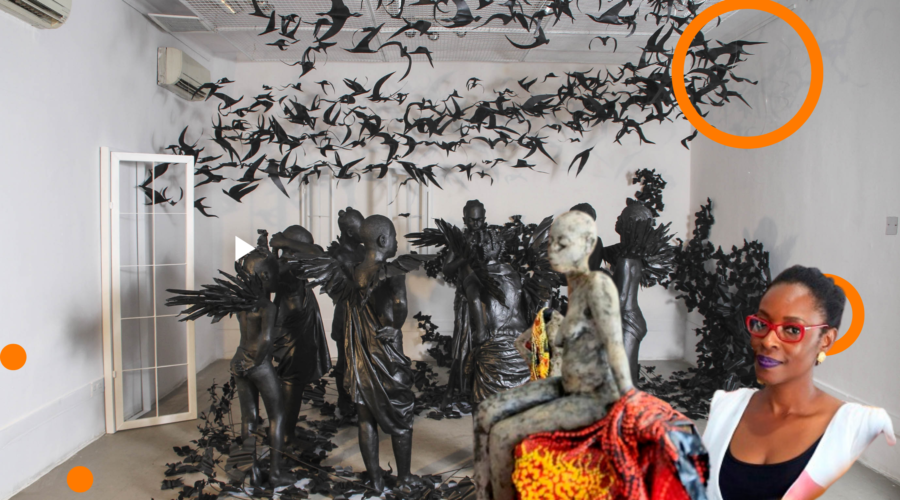Peju Alatise is a passionate artist with a successful career, an author, a poet, and a contemporary architect. She’s among the first three Nigerians to exhibit in the famous Venice Biennale Art Exhibition. A lot of her work is based on her homeland’s myths. Peju Alatise has been consistent in the art industry as a voice for women in society. This African woman talks about societal anomalies through her artwork thus sends direct messages to those who want to silence women. The Nigerian artist has been able to exhibit her work in different countries and therefore Peju has impacted the art world and is recognized with different awards.
Read about how schools are killing creativity here.
Peju Alatise’s Early Years
Peju Alatise was born in Lagos, Nigeria, in 1975, into a reserved Muslim family, the fifth child of seven siblings. She knew she wanted to be an artist at the age of fifteen. When the time to do what she wanted to present itself, her father objected to it, but her mother, who had consulted a spiritualist, believed that Peju would do well in the field. She attended Ladoke Akintola University in Ogbomosho, Oyo state. Her father supported her when she decided to study architecture, which was very close to what she wanted.
Career
The writer started her career by painting and then ventured into multimedia art. Thereafter, she explored three-dimensional art, always focusing on the message. Because Peju Alatise believes that art should give expression to the world, she uses her paintings to discuss social ills and advocates for better communities that embrace equity in gender roles. The artist works with beads, resin, and other materials in her painting. She uses Yoruba mythology, literature, and symbols to express different issues. This has been a successful strategy as her artwork has been exhibited in New York, Nigeria, Morocco, and South Africa.
In an interview with Vogue, Peju said she is looking for the truth and that her work centres around women in Nigeria. She said she gives her perspective on politics, religion, and other aspects of society using her art. Her paintings include Okiemute, See Me, Oluronbi, God is a Girl, Lost, Manifestation, Spiderman, Dream Catcher, and Sticks.
Peju Alatise’s Art
The Flying Girl is one of Peju Alatise’s most successful paintings. It was showcased at the Venice Biennale. The painting addresses the case of child labour in society. It is a typical explanation of a girl child who thinks of a world that allows her to be free. Using the wings to describe her flight symbolizes the child’s freedom.
Another of her most fantastic artworks is the High Horse Painting, which is based on gender inequity. The inspiration came from a mother-daughter conversation that she overheard by chance. She listened to the mother, shutting the girl up and giving her a societal norm of how a woman should behave. The two-time novelist explains that the girl’s gender can’t be kept silent forever. The new generation will speak up and retake their place in society.
Awards and Achievements:
Peju’s effort was rewarded when she got her first award in 2017. The FNB art prize. This happened in Johannesburg, South Africa.
Peju is the brain behind the ANAL foundation. This is her way of encouraging, training, and grooming new artists.
Conclusion
Peju Alatise is informing and inspiring people with her artwork. She understands the importance of using art as a communication form. Her work has inspired other artists as she continues to showcase African culture worldwide.




